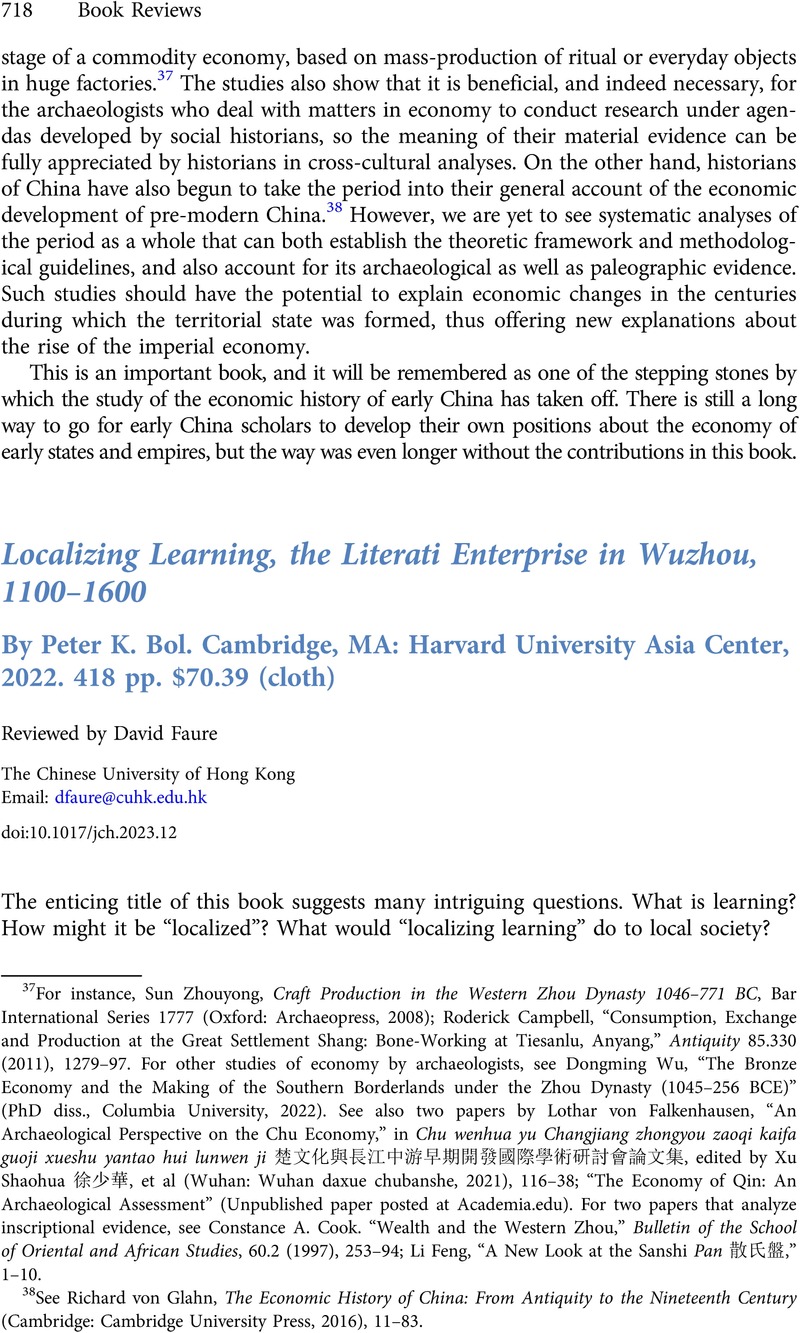No CrossRef data available.
Published online by Cambridge University Press: 04 September 2023

1 Taiping Lüshi zongpu 太平吕氏宗谱 (1821), 20/遗德 yide/14a–15b; Lü Hao 吕皓, Yunxi gao 云谿稿 (1924), in Congshu jicheng xubian 丛书集成续编 (Taipei: Xinwenfeng, 1989), 32–433, 436–437. The translated text reads: 大凡婺七邑始永康,永康十乡始太平,太平四都有半,始十七都,君所居也.
2 Fenglin Wangshi Yiyuan zongpu 凤林王氏一原宗谱 (1888), 1/14a–15a. Original text: 族而无图不足以知宗系之次,图而不谱又何以悉世泽之详?
3 Fenglin Wangshi Yiyuan zongpu, 1/8a–b.
4 Fenglin Wangshi Yiyuan zongpu, 1/not paginated. This is the text: 先是嘉定间,扦量官司,虑人诡挟,禁弗使立瞻茔正,分入众位,给由收掌。岁久,寖有后患。众议克合,乃以七世之塚,眂厥亩步,率彼元由,立石砧基,而白于有司,纽计官物,岁考成数而输焉。置田充费,且兑鸠率,俾子孙得以世守.
5 Orzech, Charles D., “The ‘Great Teaching of Yoga,’ the Chinese appropriation of the Tantras, and the question of esoteric Buddhism,” Journal of Chinese Religions 34.1 (2006), 29–78CrossRefGoogle Scholar at 55.